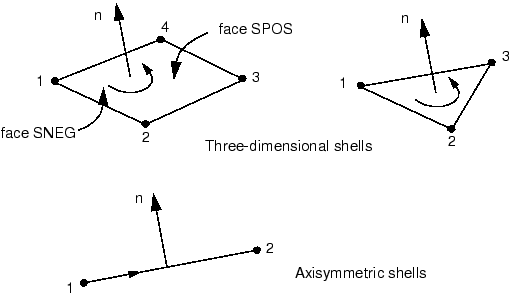Shell normals and shell surfaces | ||
| ||

For axisymmetric shell elements the positive normal direction is defined by a 90° counterclockwise rotation from the direction going from node 1 to node 2. For three-dimensional shell elements the positive normal is given by the right-hand rule going around the nodes in the order in which they appear in the element definition.
The “top” surface of a shell is the surface in the positive normal direction and is called the SPOS face for contact definition. The “bottom” surface is in the negative direction along the normal and is called the SNEG face for contact definition. Normals should be consistent among adjoining shell elements.
The positive normal direction defines the convention for element-based pressure load application and output of quantities that vary through the shell thickness. A positive element-based pressure load applied to a shell element produces a load that acts in the direction of the positive normal. (The element-based pressure load convention for shell elements is opposite to that for continuum elements; the surface-based pressure load conventions for shell and continuum elements are identical. For more on the difference between element-based and surface-based distributed loads, see Distributed loads.)